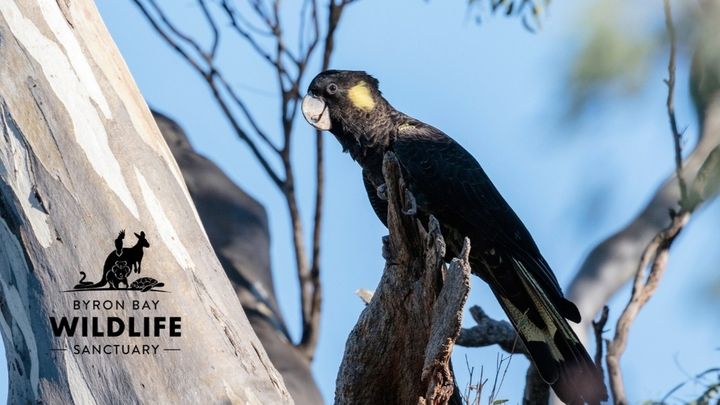
Build Lemonade A Home
Donation protected

Meet Lemonade, the yellow-tailed black cockatoo.
Lemonade has not had the easiest start to life. She was rescued and brought to Byron Bay Wildlife Hospital after being found caught in a fork in a tree. She suffered damage to one of her shoulders and still does not have full rotation of her shoulder blades. It is also believed she suffers from cognitive issues from a lack of oxygen to the brain.


She went to a carer briefly before being placed with Brianna Watts, The Byron Bay Wildlife Sanctuary's Head of Birds. She and her partner Joshua Carruth (The Byron Bay Wildlife Sanctuary's Supervisor and Head of Mammals) slowly nursed Lemonade back to health as she was unable to feed for herself and could not swallow. Through lots of hard work for over a year, Lemonade slowly learned to feed for herself and could continue recovering.
A strong partnership between The Byron Bay Wildlife Sanctuary and The Byron Bay Wildlife Hospital has saved Lemonade from being euthanised, a critical accomplishment #forthewildlife
Lemonade has had a very slow path to recovery but now is ready to have her forever home at The Byron Bay Wildlife Sanctuary. Unable to re-enter the wild, she needs a custom enclosure that gives her the space she needs and deserves. The Sanctuary is a registered charity and is trying to raise the funds to build Lemonade for Forever Home.
Ways to help
- Every donation, big or small helps us to build Lemonade the home she deserves.
- If you donate over $500 a plaque with your name will be added to the outside of Lemonade's new enclosure to acknowledge your considerable generosity.
- We will also be hosting a fundraising event at The Byron Bay Wildlife Sanctuary on the 2nd of December with a silent auction, food, dancing and a cash bar. All funds from this event go back to building Lemonade's enclosure. Buy a ticket here.
About yellow-tailed black cockatoos
Being large birds, black cockatoos nest in tree hollows and need large, mature trees for habitat. All species of cockatoo are impacted by habitat loss and land clearing. The yellow-tailed black cockatoos are in decline as urban expansion reduces their habitat.
Large raptors such as the Peregrine Falcon and Wedge-tailed Eagles can be predators of cockatoos. Their tree hollow nests face many hazards, including various goannas and possums. The wildlife trade has also been a significant threat and though most are now protected by law, in some areas the trade continues illegally.
Cockatoos have historically made popular pets – although their needs are actually very hard to meet. They are intelligent and engaging animals but are very social and can suffer if kept on their own for long periods. They demand lots of attention and their curiosity and intelligence means they need a steady stream of objects to examine, play with and destroy.
Climate change is also a major threat, bringing with it fire, drought and the decreased productivity of food trees. Our cockatoos can ill afford to see events such as the Black Summer fires of 2019-20 in successive years
About Byron Bay Wildlife Sanctuary

Our vision is to inspire people to live alongside wildlife.
Our purpose is to create an awareness of the importance of respecting our natural world together with the community, by offering experiences that enable visitors to leave feeling fulfilled, with a newfound understanding and enjoyment of what Australia’s natural flora and fauna has to offer.
With the mission to empower and enable all Australians to save wildlife, every dollar spent at the Sanctuary is reinvested in the conservation, rehabilitation, and future of Australian Wildlife.
Our team works alongside our partners to increase awareness and preservation of threatened and endangered species, with the primary objective to rescue, rehabilitation and release.
Our vision is to develop the Byron Bay Wildlife Sanctuary into a world-class bio park with a focus on Australian Wildlife through conservation, education, indigenous engagement and ecotourism initiatives
The developments planned are significant, taking place over the next 12 to 24 months. They include structural and aesthetic upgrades, as well as habitat advancements for resident wildlife.
With priority projects such as the essential rebuilding of the Reptile House, Nocturnal House, Free Flight aviary, and Frog program, every dollar spent at the Sanctuary is reinvested in the conservation, rehabilitation, and future of Australian Wildlife.
You can find out more about Byron Bay Wildlife Sanctuary by clicking here.
 Organizer
Organizer
Byron Bay Wildlife Sanctuary
Organizer
Fernleigh, NSW